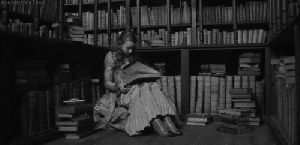There’s something about the holiday season that makes me want to curl up with a cozy blanket, hot chocolate, and read stories of love. Let It Snow was the perfect holiday read.
 Let It Snow
Let It Snow
by John Green, Maureen Johnson, and Lauren Myracle
352 p. Speak. 2008.
Gr 9 Up
Three authors of teen fiction join together to write a collection of linked novellas set in the same town in North Carolina around Christmas Eve. When a snowstorm hits, a packed train get stuck in the resulting snow, and the teens from the train interact from the teens from the town in hilarious and romantic ways. In Johnson’s “Jubilee Express,” Jubilee meets Stuarts, who convinces her she deserves better than the boyfriend she left at home. Green portrays the teen male perspective with humor and wit that reminded me of Paper Townsin “Cheertastic Christmas Miracle,” in which Toby struggles on his quest through the snow with his two buddies to reach the Waffle House in order to meet 14 stranded cheerleaders. In Myracle’s “Patron Saint of Pigs,” Addie agonizes about her recent breakup. Everything concludes nicely with all the main characters enjoying coffee at Starbucks.
The Feels
Mild feels. The stories are tender and humorous with believable characters. Johnson’s was probably my favorite of the three, and I did not much care for Myracle’s story at all. The stories illuminate the magic of the holidays, and the collection is a light, but satisfying read for cold winter nights.
 Therefore, since I normally use
Therefore, since I normally use  I initially planned on using
I initially planned on using  PowerPoint and Prezi but was in a similar format so it would be easily recognizable and understandable for my intended audience. It has the tagline “Create Amazing Presentations!” which seemed a little lame to me. However, the online software has free templates that you choose from to make slideshows, video presentations, and even 3D presentations! Their home page features this nice infographic (I really love infographics) about why you should use emaze over PowerPoint.
PowerPoint and Prezi but was in a similar format so it would be easily recognizable and understandable for my intended audience. It has the tagline “Create Amazing Presentations!” which seemed a little lame to me. However, the online software has free templates that you choose from to make slideshows, video presentations, and even 3D presentations! Their home page features this nice infographic (I really love infographics) about why you should use emaze over PowerPoint. 
 As I’m collecting materials for my inquiry project, I’ve noticed so many of these books look like “girl books.” I know, I know, boys and girls can fall in love with the same books. But seriously, are you telling me a teenage boy is going to pick up The Beginning of Everything to read? I have a hard time imagining a teenage boy walking around carrying this brightly colored book with him. On my nightstand, there is a small stack of books I have gathered for this project, and every time I just look at the spines of the book, I am struck by how “girly” they all look. The truth, I think, is that girls will read “boys’ books,” but boys aren’t as likely to read “girls’ books.” The market is so saturated with “lip-glossy” covers. And, I’m sorry, but if the cover screams girl, I don’t think he’s going to pick it up. Beyond just the covers though, I feel that a lot of the books’ topics and themes may just not appeal to boys.
As I’m collecting materials for my inquiry project, I’ve noticed so many of these books look like “girl books.” I know, I know, boys and girls can fall in love with the same books. But seriously, are you telling me a teenage boy is going to pick up The Beginning of Everything to read? I have a hard time imagining a teenage boy walking around carrying this brightly colored book with him. On my nightstand, there is a small stack of books I have gathered for this project, and every time I just look at the spines of the book, I am struck by how “girly” they all look. The truth, I think, is that girls will read “boys’ books,” but boys aren’t as likely to read “girls’ books.” The market is so saturated with “lip-glossy” covers. And, I’m sorry, but if the cover screams girl, I don’t think he’s going to pick it up. Beyond just the covers though, I feel that a lot of the books’ topics and themes may just not appeal to boys.








































